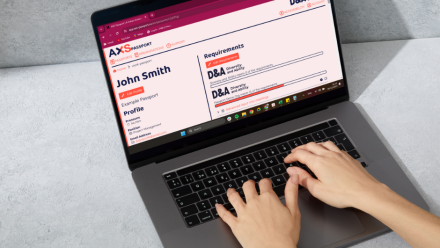How is the cost of living crisis impacting disabled people, and what can we do about it?
16th January 2023 by Rachael Roberts
This information and guidance is available in booklet form as a downloadable PDF, or in an accessible Powerpoint format.
The cost of living crisis has impacted homes across the UK, with the current government’s decisions regarding energy costs pushing people into fuel poverty and negatively impacting their health. In these cold Winter months, many people face difficult scenarios as things like being able to comfortably heat a home become a growing struggle.
This crisis is disproportionately impacting disabled people across the UK.
Disabled people face higher living and energy costs due to a range of factors, including the costs of:
- personal assistants and/or carers
- assistive devices, such as such as mobility aids, screen readers and/or mobile devices with texting or specialized apps.
- transportation
- modified housing, that meets our access requirements.
This is compounded with the fact that disabled people experience higher rates of unemployment: 31% of working-age disabled people were at work compared to 71% of non-disabled people.
We, as individuals, do not hold the responsibility for the energy crisis, nor to the negative impacts of the crisis on our health, lives and comfort. But, if you are feeling the impacts, we’ve created this accessible booklet guide to give you some tips, guidance and direction for support so that we can all make it through this crisis, together.
Support Available
Due to the combined effects of inflation and rising energy prices, it’s becoming increasingly difficult for people to buy and access much-needed items. Thankfully, there are some resources available for further support.
Food sharing apps
Apps like Too Good To Go and Olio allow you to access discounted, or even free, food from your community and local stores and restaurants.
Food banks
If you find yourself in need of access to a food bank, find your nearest Trussell Trust food bank.
You can also check the websites and bulletin boards of your local community centre and religious buildings such as churches or mosques. There may be many across the country who are operating their own individual food banks, such as Oasis Waterloo London Food Bank or Ty Hapus Community Centre in Llandudno, North Wales.
Finally, you can investigate if there are any food waste schemes in your local area. In Brighton, for example, the Real Junk Food Project rescues food destined for landfill and uses it to create free or low-cost hot meals for anyone who needs them.
Free advice
There are resources that can provide further support for accessing housing or managing finances:
- Citizens Advice Bureau: free, confidential advice available online, in-person, or over the phone
- Step Change: free debt advice online or over the phone
- Trussell Trust Help through Hardship: a free phoneline for help, guidance and support
This resource from Action for Warm Homes helps to provide a price estimate for using home appliances per hour, as of 2022, which can help us in understanding our energy costs.
Food pantries
Food pantries provide a community-based way of buying food. Members pay a small amount each week, and in return, they choose around ten items of food or other groceries. The food comes from food retailers and producers.
The national charity Fareshare sends food to pantries and other community-focused initiatives. Pantries can also work with small local suppliers and can use the money collected from memberships to buy additional stock when needed. Find your local food pantry.
Financial support
Depending on your location in the UK, you may be able to access financial support to help with your energy costs such as a Warm Home Discount which can provide you with money off of your electricity bill for the winter period (October 2022 to March 2023).
Make sure to check the financial support information for your area as it may differ from England, Northern Ireland, Scotland and Wales.
You may also be able to claim a winter fuel repayment: find out if you are eligible. The governnment’s Help for Households resource outlines what financial support may be available for you.
Finally, find out how you can report a missed Cost of Living payment if you were due to receive a Cost of Living Payment but you have not received it yet.
About smart meters
A smart meter measures the amount of gas and electricity you use in your home. They come with an in-home display screen to help to visualise what energy you are using and show the amount that you are spending. This data is then sent directly to your energy suppliers to eliminate the need to work out usage manually.
Citizens Advice have expressed concerns for disabled people and those living with long-term health conditions being put on an automatic repayment meter. You should always have the free and informed choice of setting up automatic top-ups or pay as you go options. You will also not be charged separately for having a smart meter, because it will remain as part of your energy consumption and installing one is free through your energy supplier.
If you are renting but you pay the bills for the gas or electricity in your home, you can still have a smart meter installed. Here is a selection of templates for you to use to let your landlord know, as well as further information about your smart meter options when renting.
Our partners Utilita are a leading UK supplier of smart meters and have been working hard to improve their inclusivity and accessibility for their teams and their service users. You can find out more about their inclusivity journey by reading our case study of our work with Utilita here.
What’s the difference between a smart thermostat and a smart meter?
Smart thermostats and smart meters are different products with different purposes.
A smart thermostat is designed to make it easier for you to control your home’s heating. It gives you remote access to programme your central heating’s temperature through an app on your phone or computer.
A smart meter is designed to make it easier for you to send your energy meter readings to your supplier. Rather than you having to read your meter and enter the information manually, a smart meter automatically sends your readings over to your supplier. They also come with display monitors, which show how much energy you’re using and how much it’s costing you, which can help with making sure you’re saving on costs wherever you can.
12 Methods for Conserving Energy
1. Apply a cover to your kitchen exhaust fan
If you have a fan above your stove, you can try to stop the air from leaking out when the fan isn’t being used by attaching a cover. They can be attached by something like magnets, making them easier to remove or replace when needed.
2. Bleed your radiators
It is recommended that you bleed your radiators once a year to ensure there is no trapped air inside preventing them from running to their full potential.
If you need pointers, British Gas have created a video guide to how to bleed your radiator.
3. Fill your fridge
An empty fridge wastes more energy than a full one, because placing cooled food close together helps keep the fridge temperature low. If you’re not able to fill your fridge with food, you could consider helping your fridge work better by filling any extra space with bottles of water.
4. Cover the fireplace
If you have a fireplace, ensure that it is blocked and covered sufficiently when not in use. This will stop heat from other sources in the house, such as radiators, from escaping.
5. Cooking with water
If you need to cook with boiling water, using a kettle to boil the water can help reduce the amount of energy you use on the stove. Also, don’t forget to put lids on pots and pans to help your food cook faster.
Try to batch-make your morning coffee or tea in a thermos to keep your next cup of tea warm without having to boil the kettle again.
6. Radiator reflectors
Radiator reflectors project the heat from the back of the radiator into the room, rather than that heat getting lost into the wall.
You can even make your own radiator reflector by wrapping tin foil around a piece of cardboard or plywood the size of your radiator. Stick this on the wall behind your radiator for a DIY radiator reflector.
7. Don’t block the heat
Where possible, avoid placing large items of furniture (for example, sofas) in front of your heat sources. If your furniture blocks your heat sources, it absorb the heat rather than allow it to warm the air in the room. Try to avoid using your radiators to dry damp clothes for the same reason.
Heat rises; if you have a high ceiling, consider putting a shelf above your radiator. This will help direct the heat into the middle of the room.
8. Use your oven
The oven heats every shelf in there, no matter how many are being used. Make use of this heat by remembering to bulk cook meals where you can. If it’s safe and accessible to do so, you can try keeping the oven door open whilst it cools down. This will allow the heat from the oven to warm the air of your home!
9. Cover draughty windows
Sometimes, windows can let a draught into the room. Test if your windows are letting in a draught by putting your body near the corners and seals of the window to see if you can feel any cold air. If you do feel a draught, you may be able to prevent this by covering your windows with a clear plastic sheet, or taping clear plastic film along the insides of the window frame.
Keeping the curtains drawn on cold days and evenings will also help to keep in the warmth. If you are able to, you could invest in some thermal curtains for extra heat conservation.
10. Help your hot water heater
Most hot water heaters in homes are programmed at a high of 140 degrees. But, for most households, turning your water heater down to 120 degrees should still provide you with warm water without making your water heater work harder than it needs to.
If you can, you could try covering your heater with an insulation blanket to help keep the warmth in.
11. Turn down the thermostat
Thermostats work by heating the area in your home to the degree which you have set. Try to set your thermostat to the lowest temperature you can (between 18-21 degrees is recommended for winter months), and make use of blankets and clothing layers if you require extra warmth.
12. Contact your energy supplier
If you have this energy and the capacity to do this, you may find it helpful to contact your energy suppliers and ask them to put you on their priority service register.
Although explaining and having to advocate for your circumstances can be draining, communicating to your energy company and making them aware of your needs will put you in a better position to have them be met appropriately.
How can you take action to campaign against rising energy costs?
If you have the space, energy, and capacity to do so, there are ways that you can campaign for change against the rise of energy costs:
- Fuel Poverty Action are a group campaigning for #EnergyForAll. They organise both in-person and digital action to campaign against fuel poverty.
- National Energy Action is a national fuel poverty and energy efficiency charity, campaigning for an end to fuel poverty.
- End Fuel Poverty Coalition is an alliance between a diverse group of charities, campaigners, local authorities and unions, all of whom share a common goal: a society in which everybody has access to a warm and safe home.
You can also find out your MP’s voting record and write to your MP to make sure your voice and concerns are heard, World Vision have created a resource providing some guidance on how you can write to your MP.
Fraud concerns
Unfortunately, there are those who would wish to take advantage of the cost of living crisis, praying on our fears and concerns to defraud people. Over 75% of the population have been targeted already this year.
If you’re a survivor of fraud, please try to remember that it is not your fault. Try not to submit to too much shame if you are a survivor of fraud; it really can happen to anyone. Do not allow shame to stop you from seeking help and justice.
Often, scammers may claim to be from an energy company. It’s useful to consider what you can look out for to try and protect yourself from fraud.
Scammers may also pose as organisations such as Ofgem, offering financial support, as seen in this example from Action Fraud. Other possible approaches that fraudsters may attempt to use to scam people include:
- offering fake discounts on prepayment electricity meters
- false offers of energy refunds
- False promises of tax rebates
- fake cryptocurrency promotions or other financial ‘promotions’
or further information on scams and how to report them, you can visit the websites of Citizens Advice, Action Fraud, or Stop Scams UK. You can also use the Financial Conduct Authorities ‘Warning List’ to help identify whether you’re being contacted by an unauthorised firm or individual and use these tips on how to spot an energy scam.
Glossary
We understand that there’s a lot of information out there- and we’ve put a lot of information in here! To help with taking it all in, we have put together a short Glossary to help supplement the dictionary definition of some of the words and terms that we have used.
Energy
Gas, electricity, oil and other substances which we use in our home to help our appliances, such as a washing machine, to work. The focus is on the effect created from these energies, such as heat.
Thermal
Material that is designed to retain heat.
Kitchen Exhaust
Also called an extractor fan, this is a mechanical fan that usually sits above the stove and helps to remove heat and smoke.
Bleed Radiators
Releasing the air that has become trapped inside of your radiator.
Insulate
Keeping something warm by, for example, covering it with extra material to stop the flow of heat from travelling outwards.
Inflation
The persistent increase in prices for goods and services, focusing on the impact this has on our abilities to be able to keep up with price increases.


